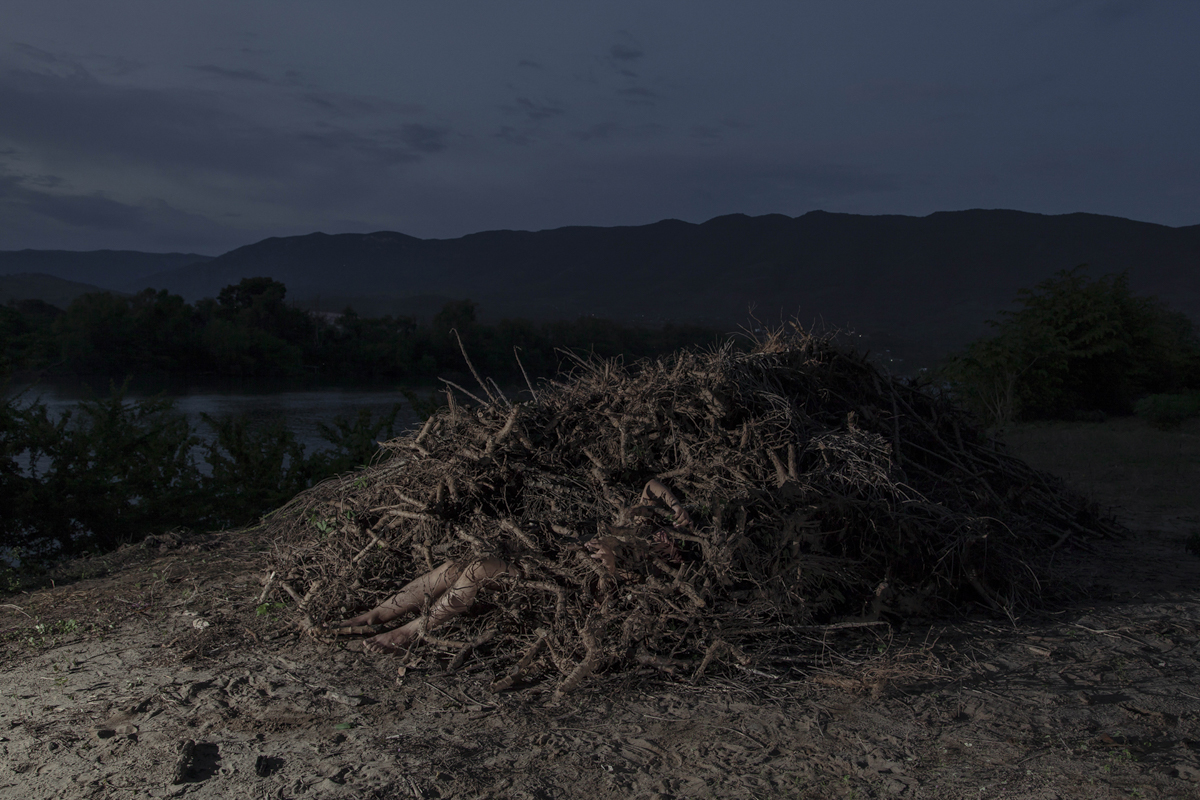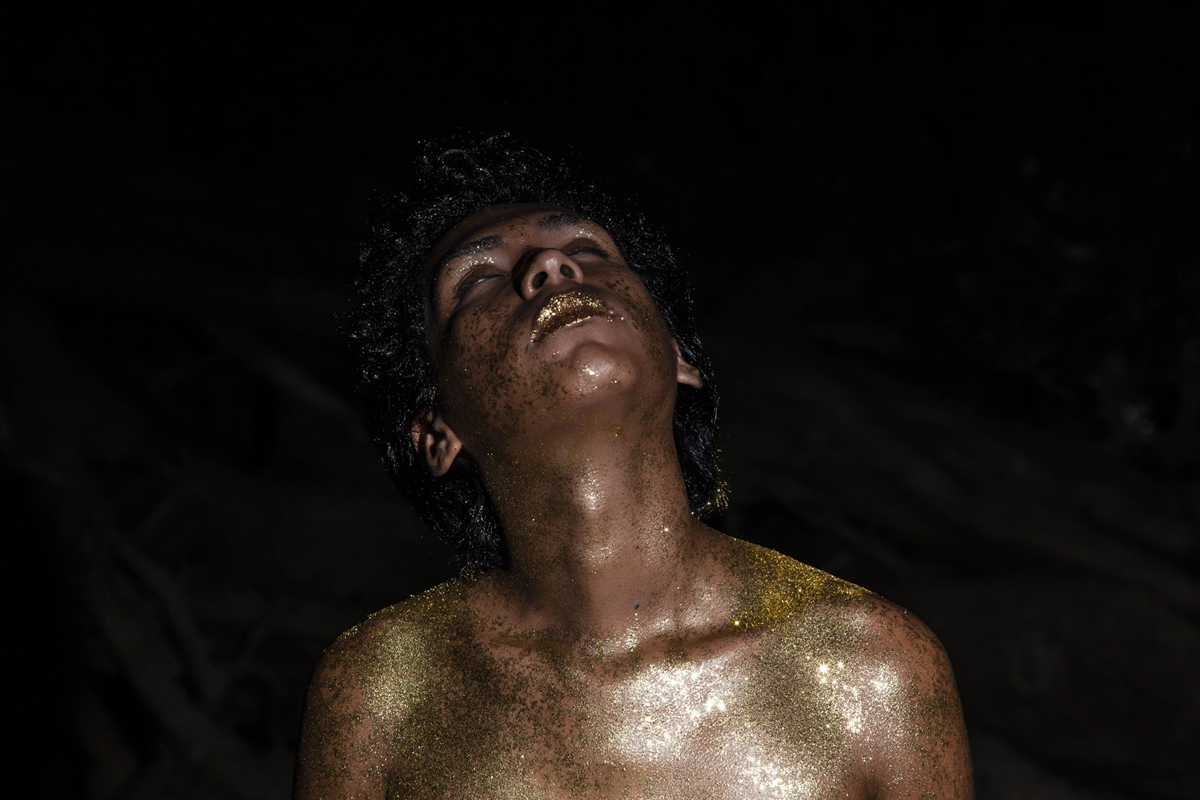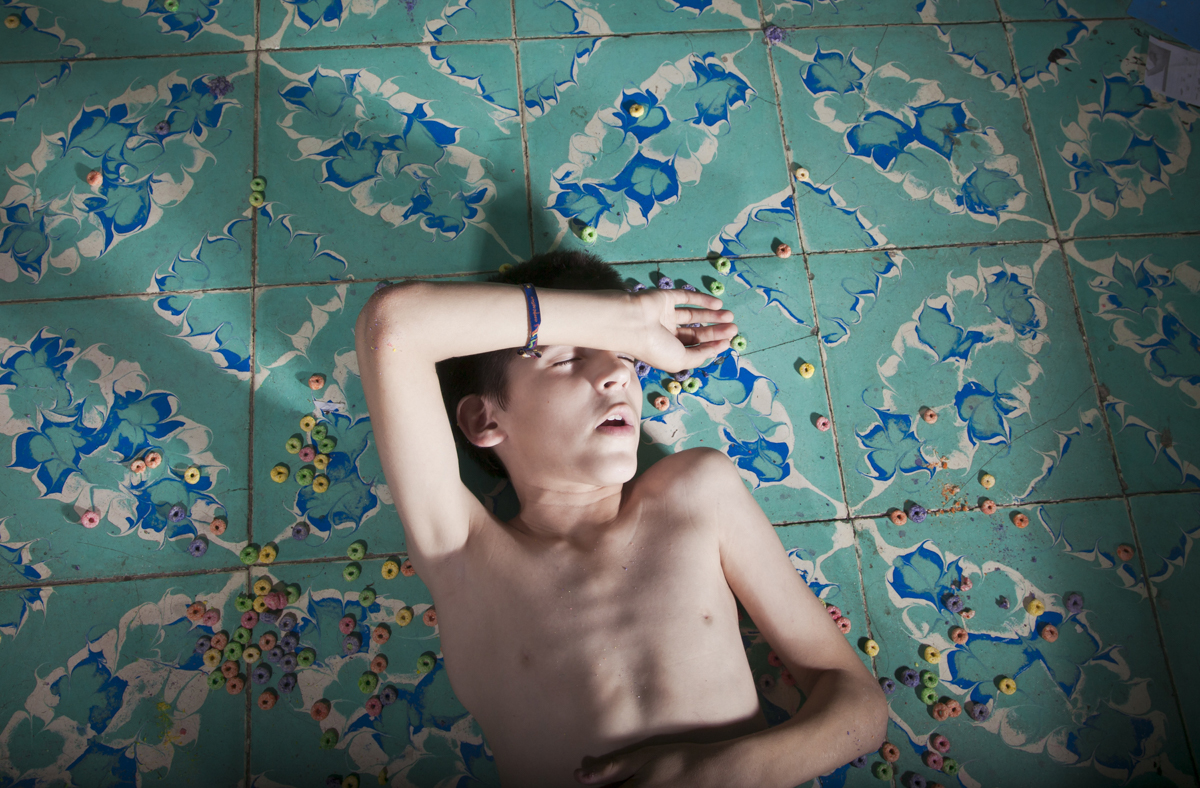“I try to register the layers of vulnerability of the human being,” says the photographer from Chiapas, Mexico, Roberto Tondopó. He is interested in moments of crisis, transformation and uncertainty, in which we feel most fragile. With photography, he explores his own intimacy: the death of his parents, the vulnerable moments of his sexuality, the transition of subjective and progressive identity that exist in the human being. “About our little death of identity that is life, as each moment we stop being who we were before,” he says, ready to explore the different dimensions of grief.
In Tránsito, in the glorious name of San Sebastián, Tondopó builds a world around the Chuntá, men who dance dressed as women on a festival in Chiapas de Corzo, while exploring his own transformation and the symbolic dismemberment in the wake of his parents death. In his words, it is “a process of weaving and unweaving my history.” For him, art has the ability to transform emotions and gradually find the path of knowledge to find peace, to turn mourning into “dancing, crying, fire or stardust”; to produce a catharsis that allows us to stop seeing ourselves as unknown beings in this human experience of connection in the deepest fragile moments.
Before, in 2015 he published his photo book Casita de Turrón, in which he reflects on the journey from childhood to adolescence of his nephews. There he observes those sections of life in which “the body does not fit with the mind, with the imagination or with the desires”, an attraction for the “constant fragmentation” that led him to be interested in the process of trans people.
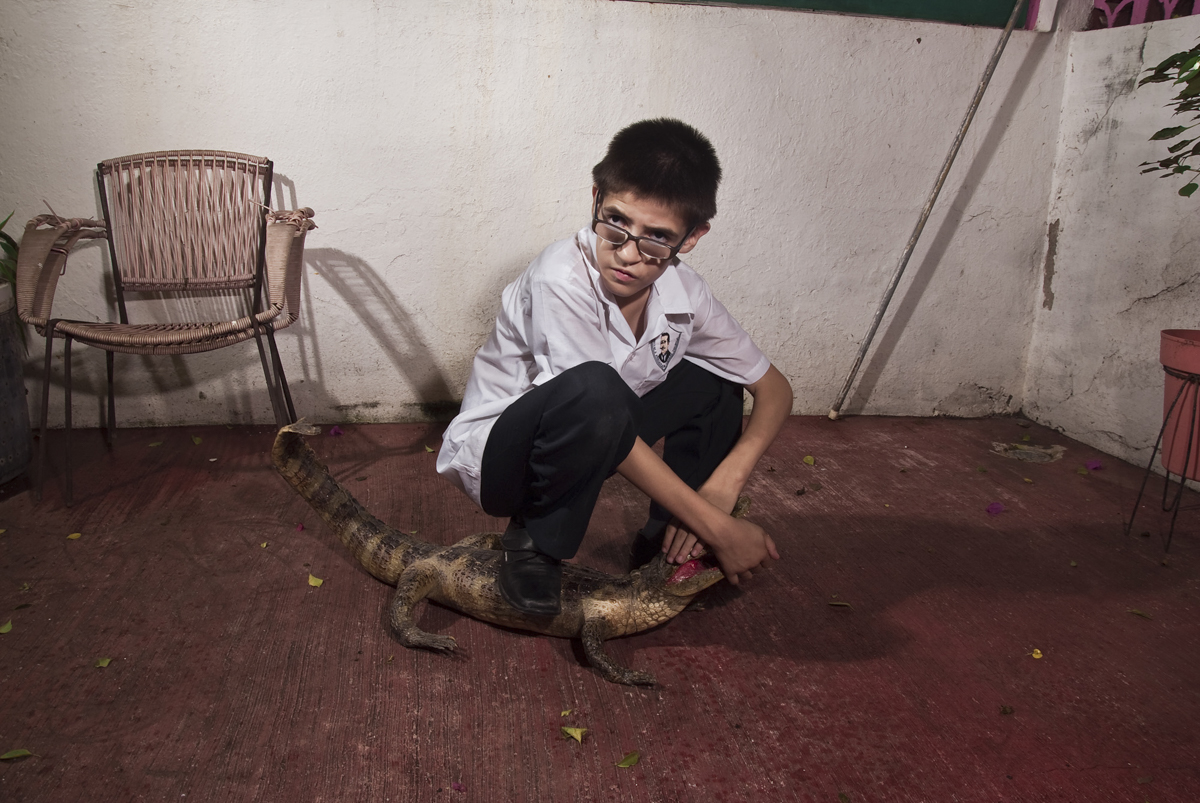
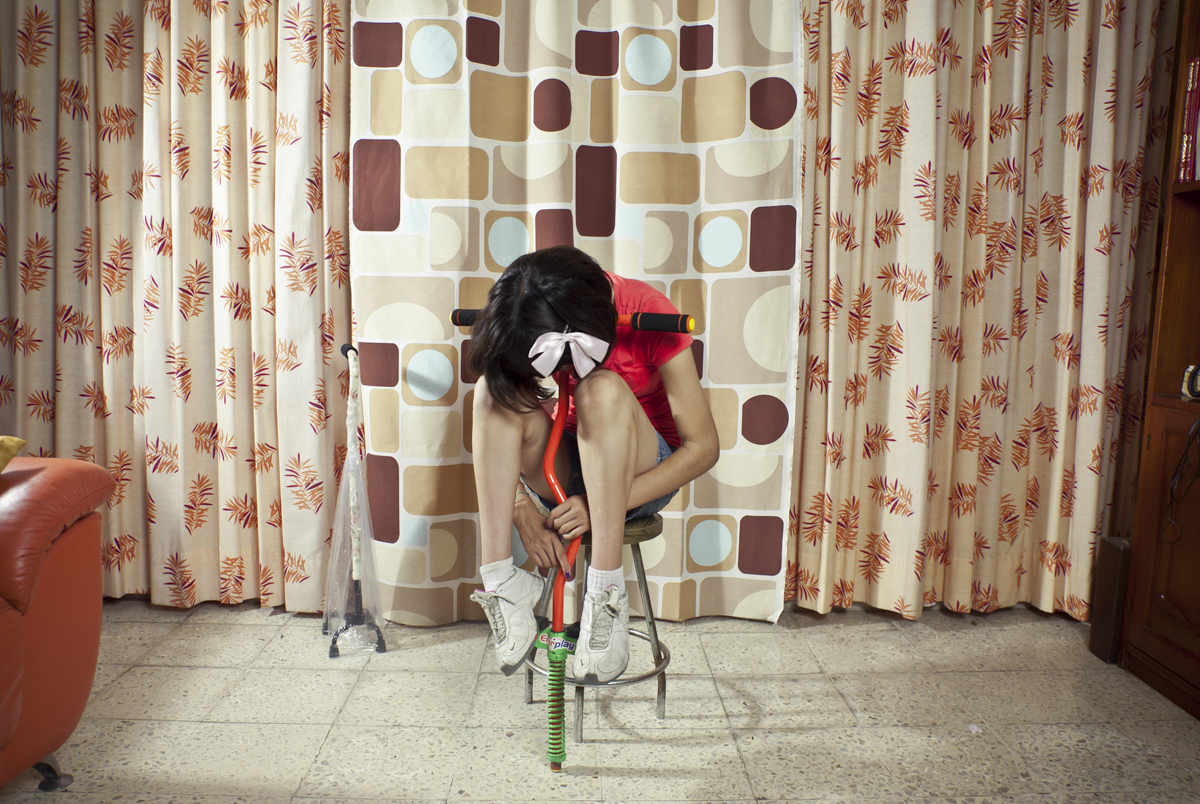
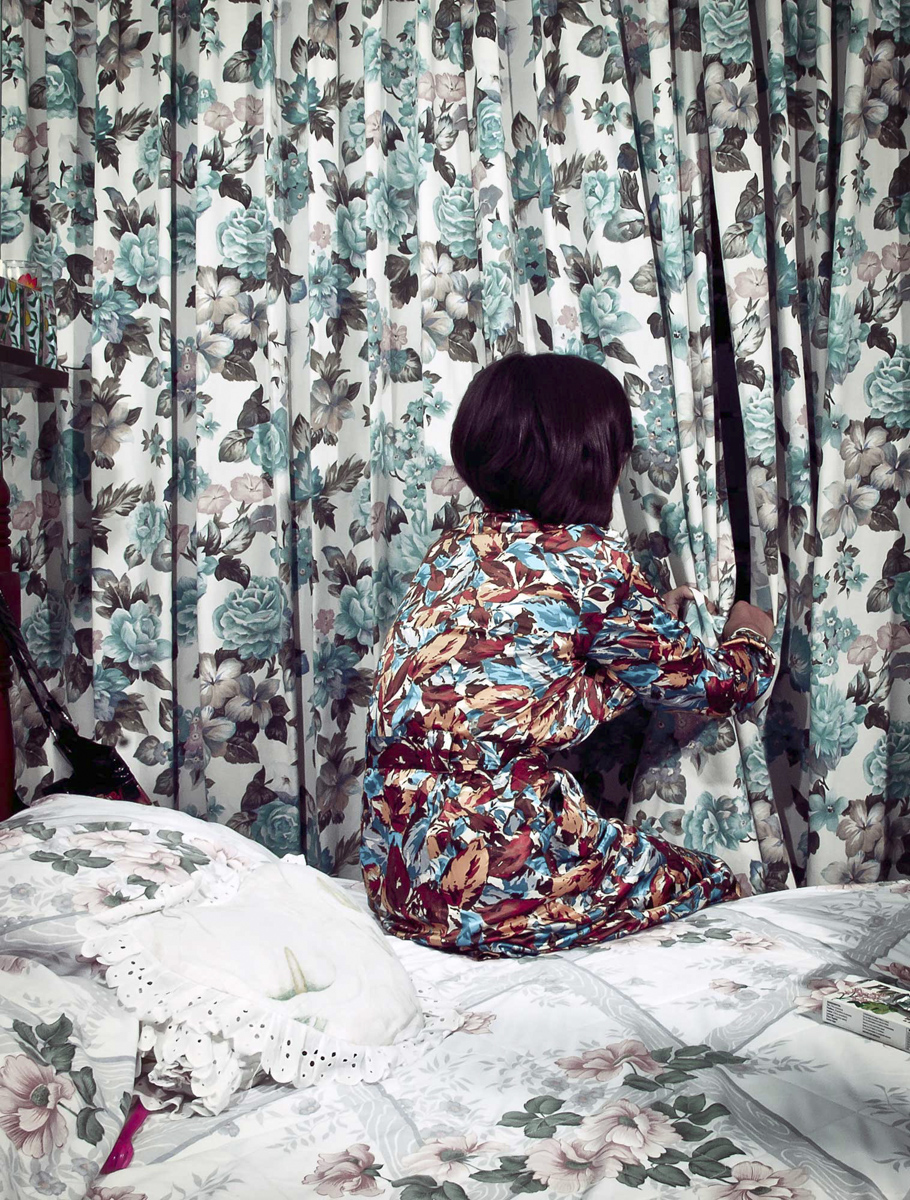
How would you count your search, your work?
Basically I have been interested in the construction of the subjectivity of individuals, in the key stage of sexuality that puberty signified and in a later project, also in parallel with the subjective process of trans people, whose corporality does not necessarily correspond to the way in how they are conceived, to become individuals without divisions, not only in action but also in ideation, imagination and thought.
Since before being a photographer, I have been interested in aspects of intimacy, the moments in which we feel most vulnerable to find answers, times of crisis like the pandemic we are going through. Those are the moments that I am interested in addressing in a reflection from art and photography, because they are the moments in which we can connect with ourselves in depth, which I believe are few. These moments that we experience of uncertainty or bewilderment help us to rethink ourselves before life, they take us out of our comfort zone, to be able to see and feel with different eyes from a place we were not used to, and move fixed ideas.
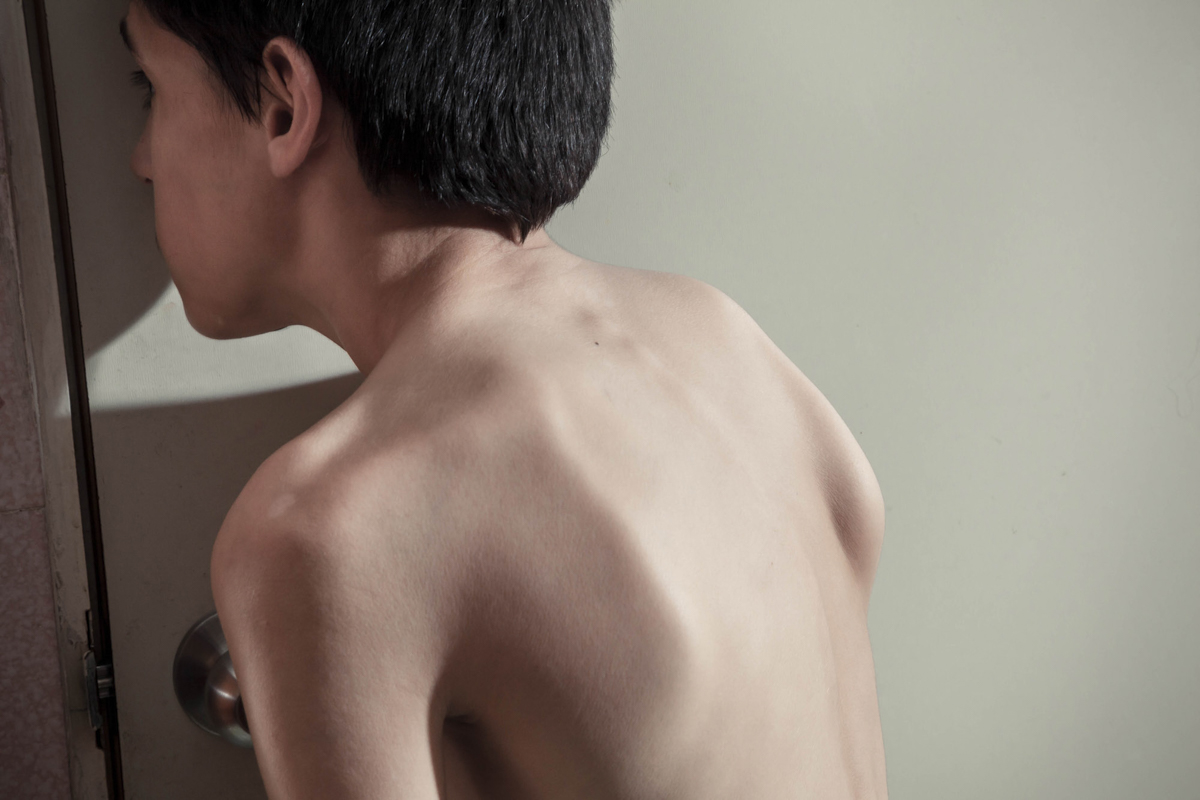
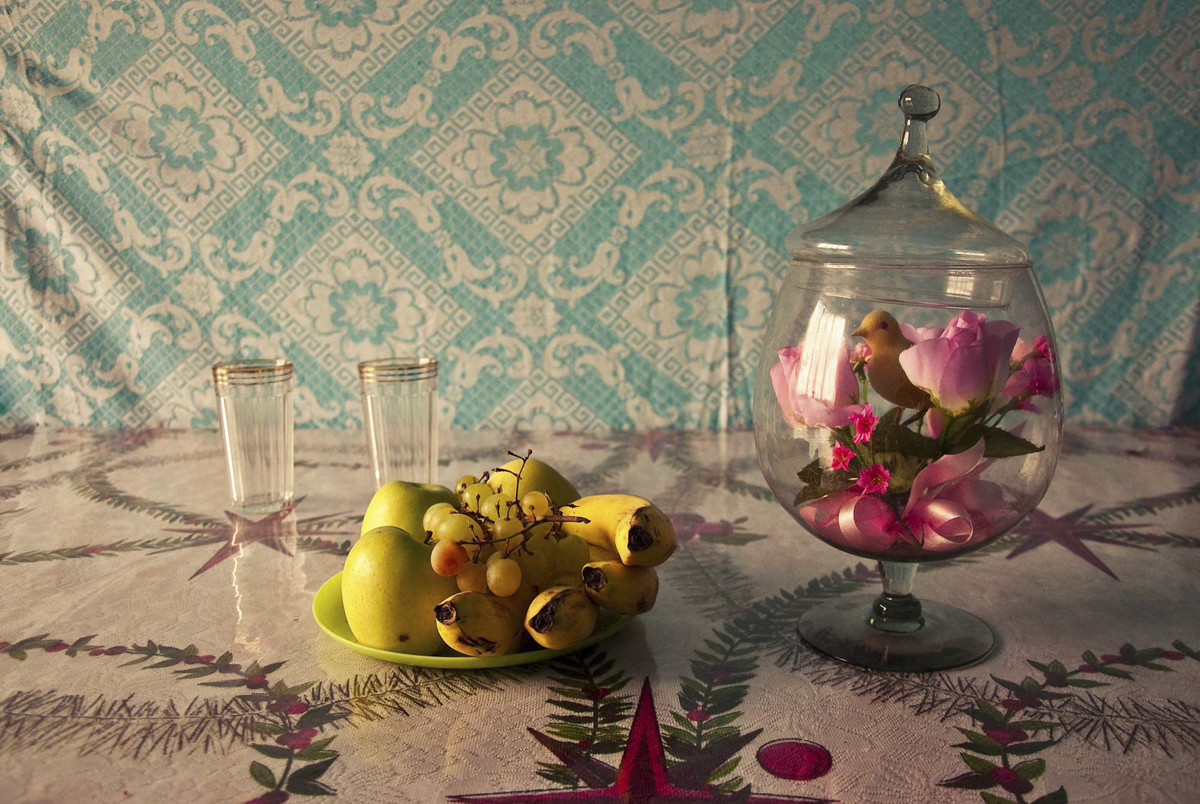
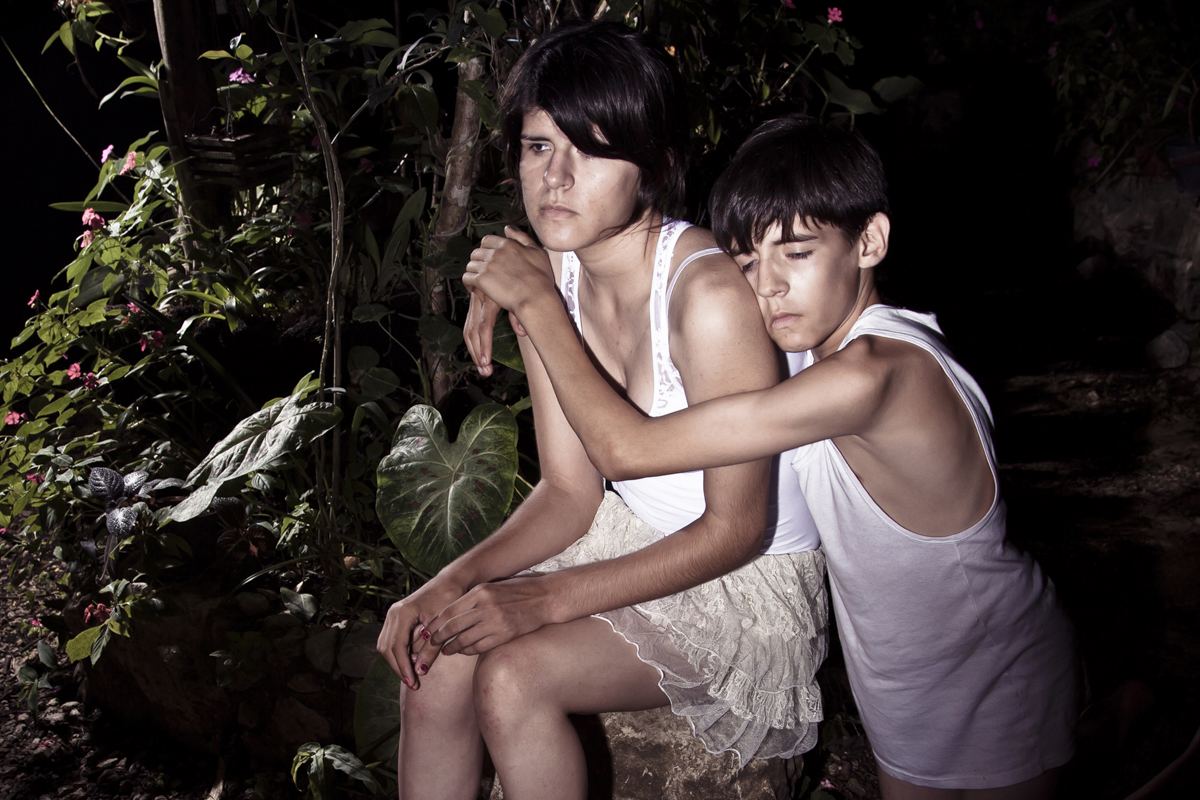
In the photobook Casita de turrón (Nougat house) you address your nephews’ transition from childhood to teens.
Personal decomposition or fragmentation is a constant. After that project I became interested in the subject of LGBTI+ people and especially individuals who are in transition, precisely for the same reason: because their desire does not correspond to the body they have. Moments in which the body does not fit with the mind, with the imagination, with the desires. In puberty, those peak moments of hormones, of sexuality in crisis. In Casita de turrón, the images also allude to the unstable way with which childhood experiences are constructed, through the fragmentary nature of memory.
Where does the name Casita de turrón come from?
Casita de turrón is a symbolic reference to the tale of Hansel and Gretel. The house represents the symbolic body of the mother on the first years and an oral regression based on the most primitive satisfactions. This project was triggered from the reading of children’s fairy tales, which have that universe of symbols associated with childhood from a language associated with images. I took up in particular the symbol of the house that children devour.
I was reading the book The uses of enchantment by Bruno Bettelheim, an important child psychologist and psychiatrist who cared for severely disturbed children, who had lived through situations of violence or abuse, and whom he guided to get ahead, rediscovering meaning in their lives through reading fairy tales.
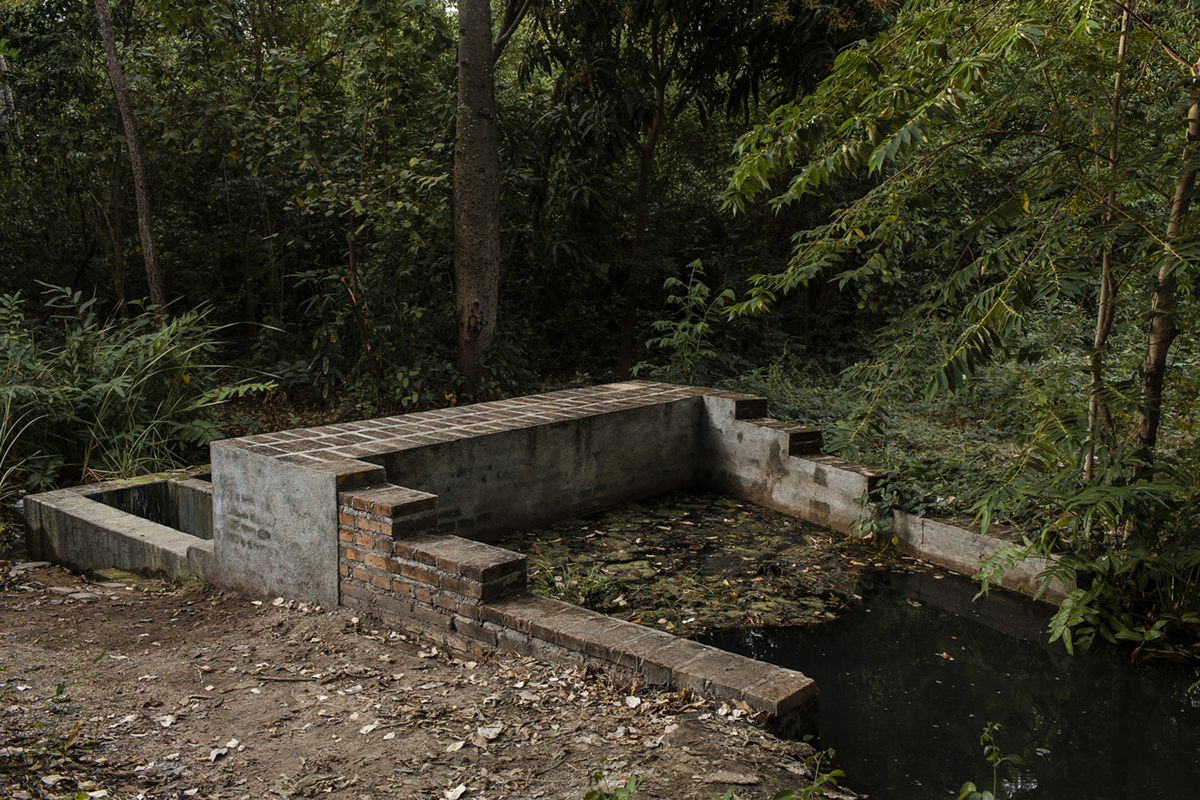
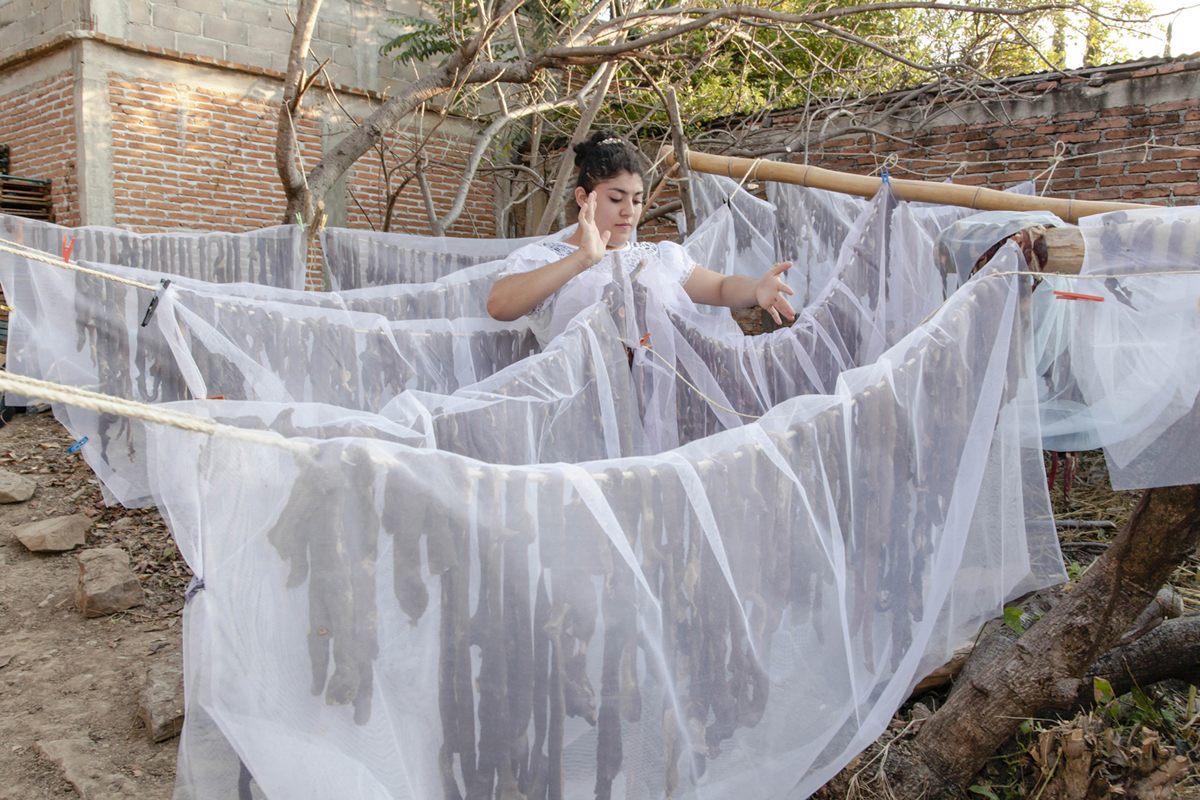
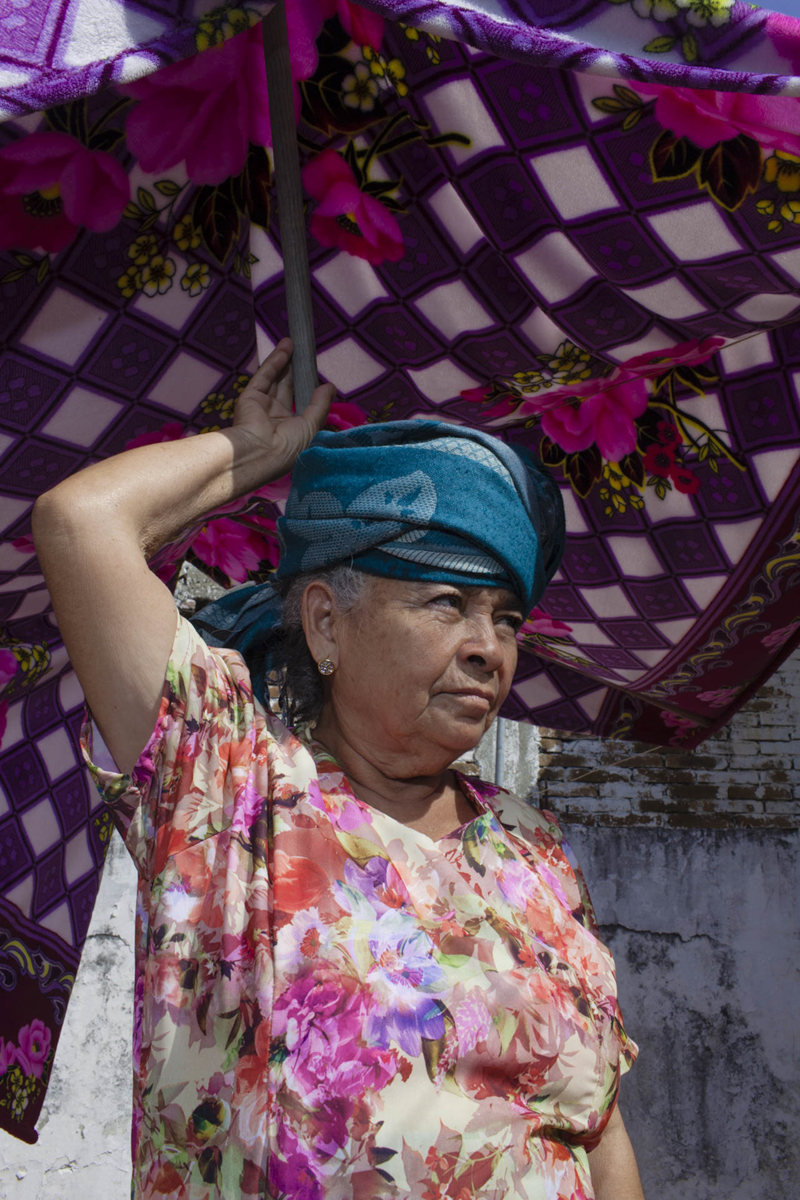
And what was the message you wanted to give through this project?
When I approached this search for slightly sexual, strong or violent symbols from fairy tales, it was a language that I needed to explore because its source is described in symbolic images, with which the mind of a child can relate either way beyond rational understanding.
The situations of abuse, violence or mistreatment that children experience in general were, deep down, a message for other children, but especially a message addressed to my nephews, with whom I built this relationship, and with whom we relived, in some way, that admonitory content of fairy tales in order, through images, to understand that path of growth with its chiaroscuro and dangers. But it also goes further, creating a relationship that we previously did not know about ourselves, in a reality built for the camera, which through games and without realizing it, also reflected much of our psyche and the house that surrounded us, in a process in which the unconscious emerged. It is something that I also reconstruct as an experience.
The personal is always political. I wanted to identify my family, within the emotional and psychological process of growing up and maturing in such a cloistered domestic context, where the discovery of a sexuality that can be challenging is experienced, in an environment such as the Mexican province like the city of Tuxtla Gutiérrez where I grew up, permeated with such harsh experiences for people who during part of their lives lived the execution of homosexuals by the State in a violent way so directly to this sector of the population as it did not happen in any other place, in the history of our country. An experience only buried by the armed Zapatista uprising of 1994 in Chiapas, but which in some way, was established as a reality full of prejudices towards the dissident people who grew up in this very immediate region. This repression, perhaps indirectly, could be linked to the history of Chuntá, which with the passage of time, recovers this current validity.
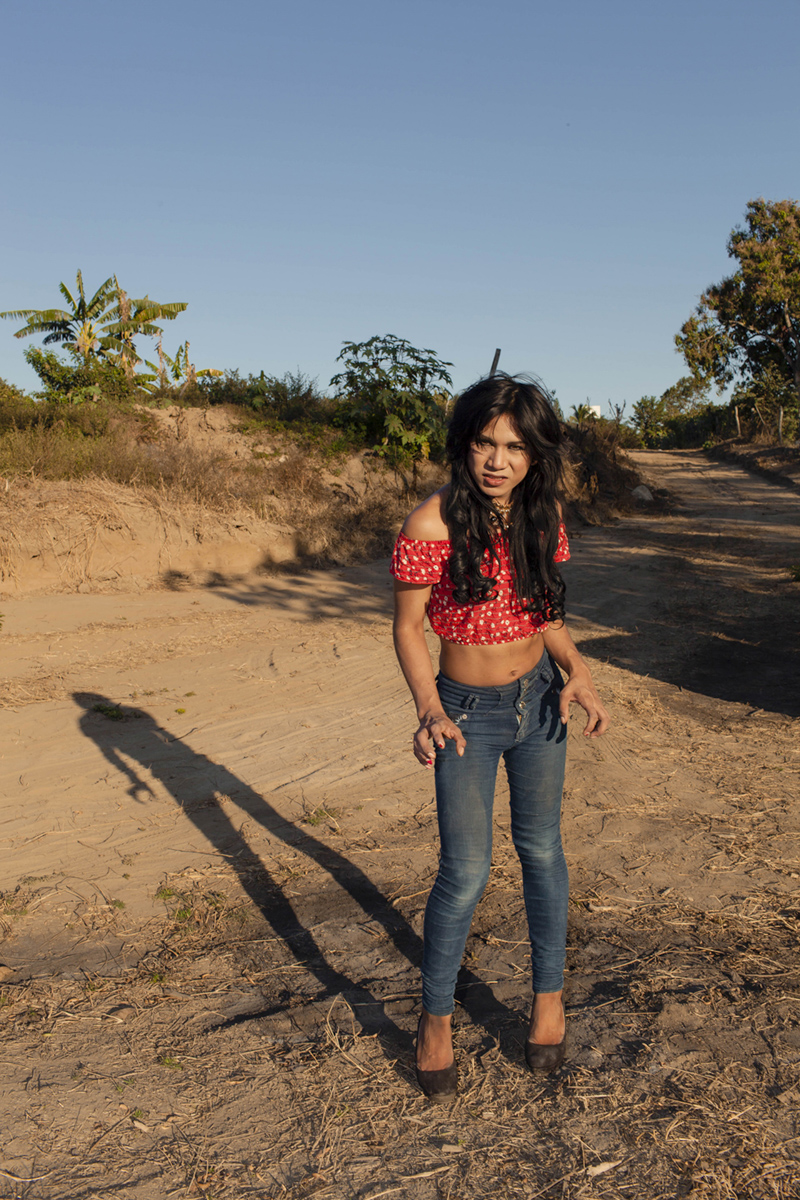
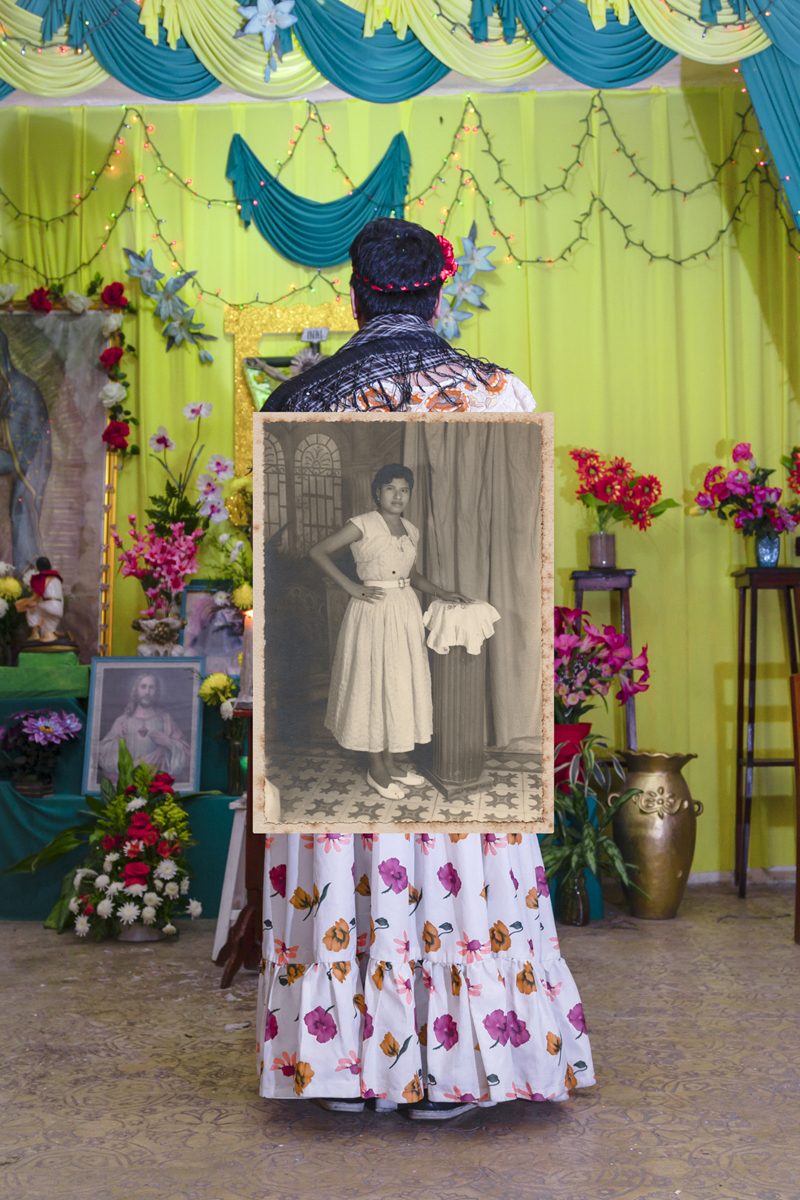
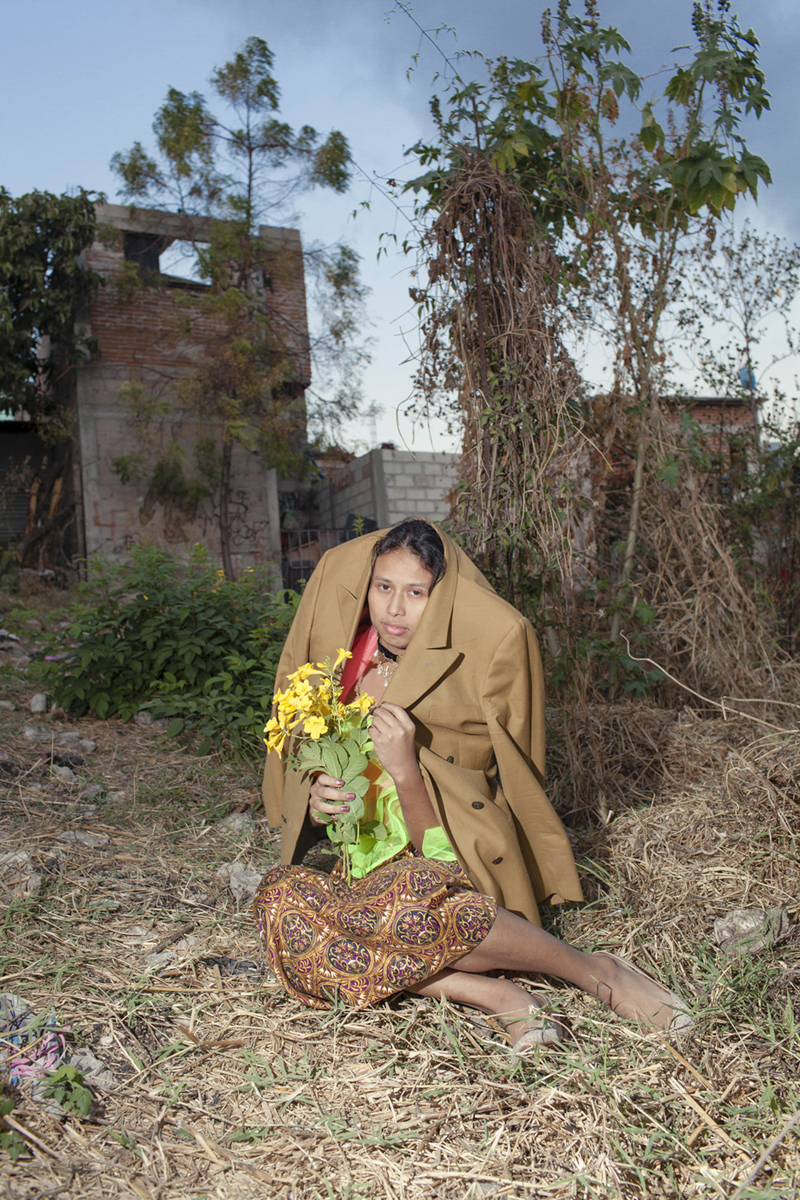
Your projects speak of intimacy.
Loss is a painful process, because it reconsiders the meaning of the deterioration of identity that occurs in the face of the physical disappearance of loved ones. Photography as an artistic way is the tool that helps me reflect on this process. Grief represents for me this deep experience of connecting the human condition with others, to generate greater understanding. In those moments of uncertainty, I try to register those layers of vulnerability of the human being in different situations.
Transit, is originally a moment of personal rupture, of transition, which is triggered by the death of my father coupled with the most recent moment, in which I elaborated the mourning of my mother. I believe that these losses, which are significant for me, are also significant at this time for many people who are suffering equivalent losses in the face of this pandemic situation. Experiencing the chaos from this situation makes me reflect not only on a personal change, but also a historical one that we are currently experiencing as a society, in which we are facing a systemic crisis that is also beginning to show fractures throughout the world in a global way, which It makes us rethink things as we previously conceived them and with it a whole system that we learned, in a paradigm shift, which can be an invitation to reinvent ourselves and continue.

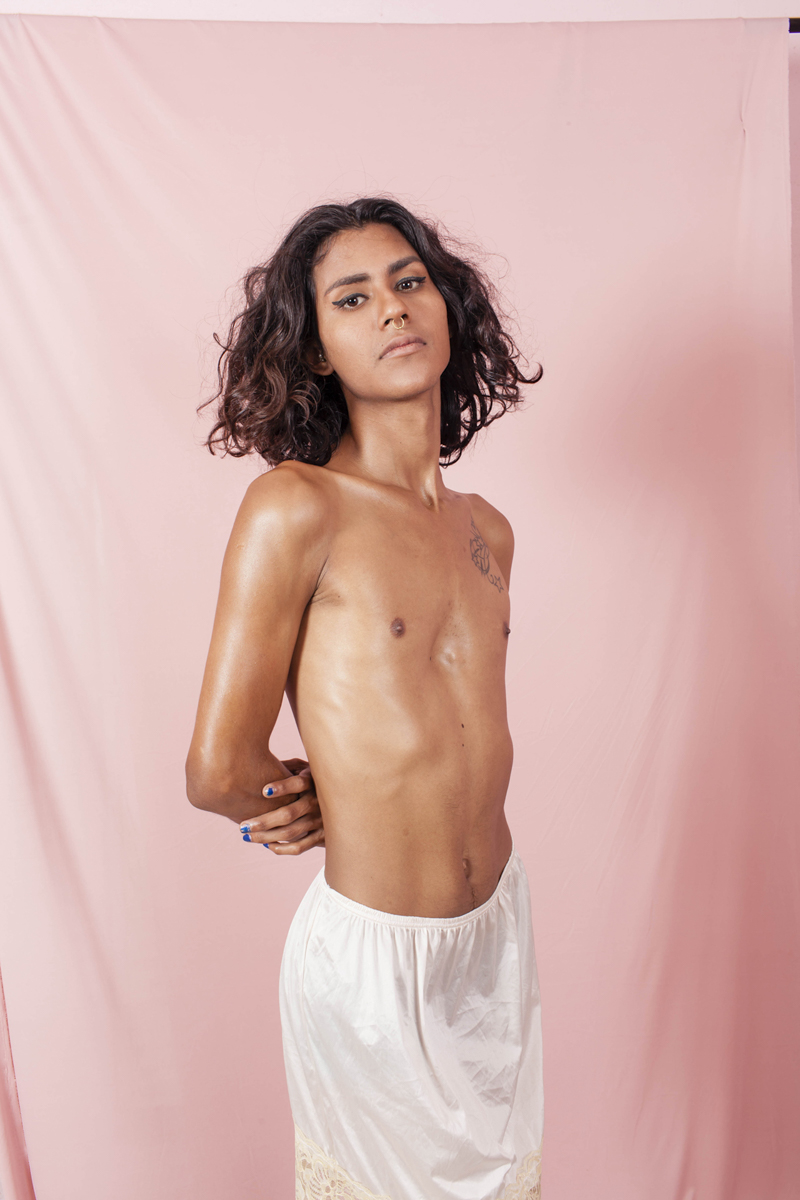
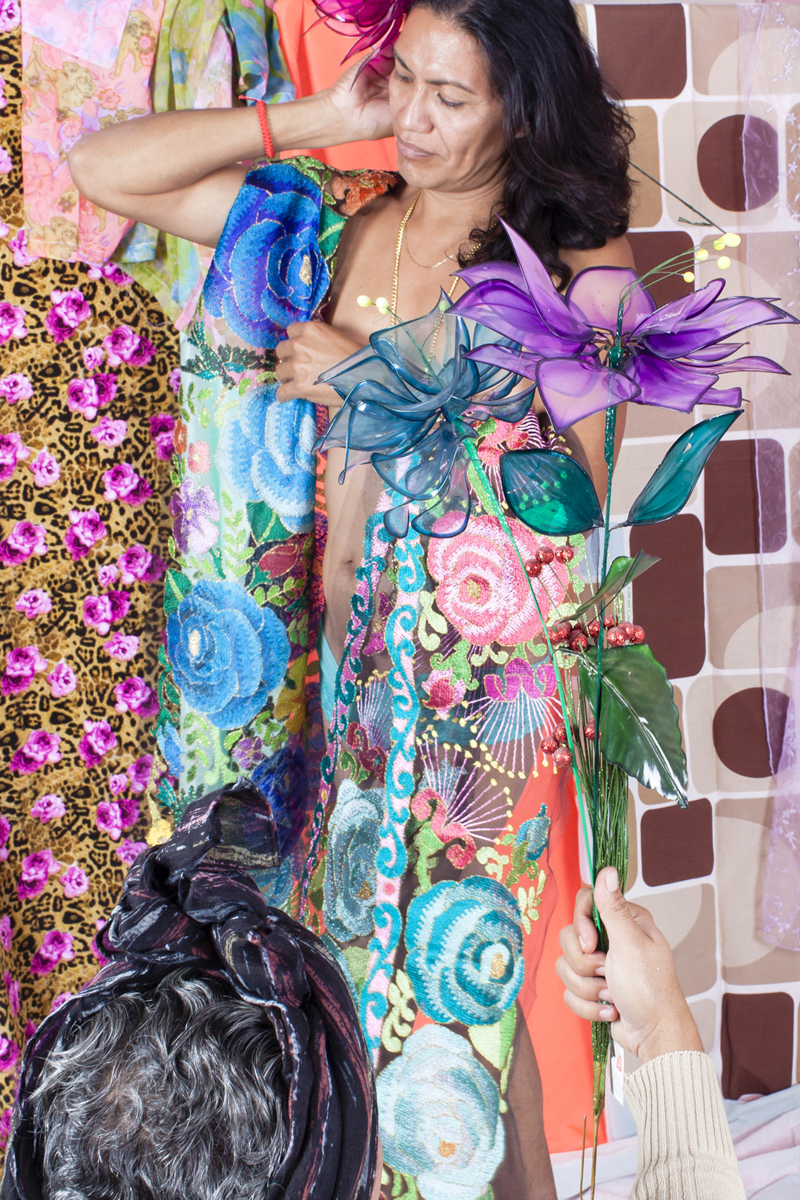
What reflections emerge from the process of exposing your own privacy?
It is a way to reach a process of self-knowledge and search for inner truth, to connect with our essence. That place from where without ego masks, we can really share from the most basic human experiences to talk about the things that interest us and connect with the most universal emotions.
Except that sometimes this winding path is revealing of our wounds, so not all of us are willing to travel it to get to touch our darkest parts, and face that underground journey through hell to find the light. In many ways, it is from this formation of authentic curiosity that I began my artistic search, which is equivalent to my spiritual search. Perhaps that is why the way in which I create photography or the place from which I reflect it, also because of the Zoque roots from which I come, has a metaphysical charge, which derives from the path of intuition and the experiences that shaped me naturally, without dividing the thoughts that a western formation tends to divide into dichotomies (black-white, indigenous-non-indigenous, woman-man, life-death, etc.), and where the intangible reality is also part of the tangible, although we do not perceive it. In my case, a more mestizo or hybridization construction where I use the worlds that inwardly inhabit the way I conceive my reality in this place of creation, from where I feel connected to a type of higher power.
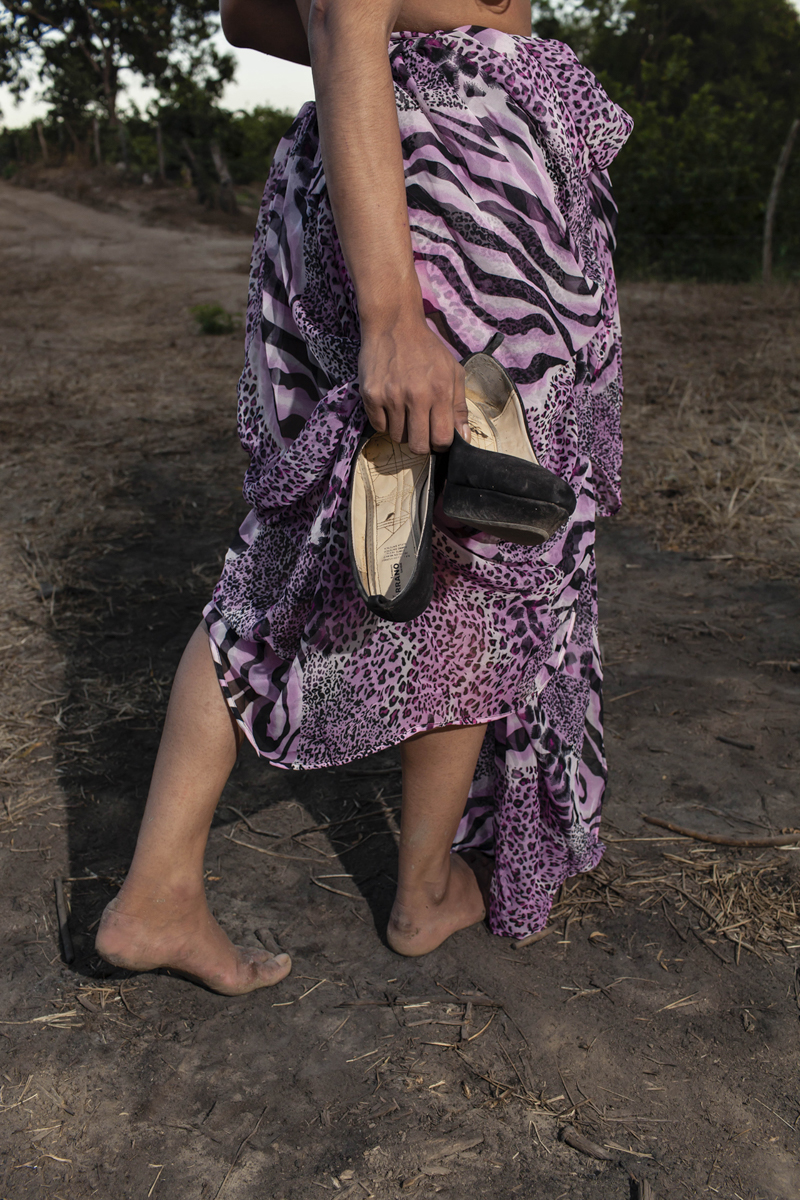
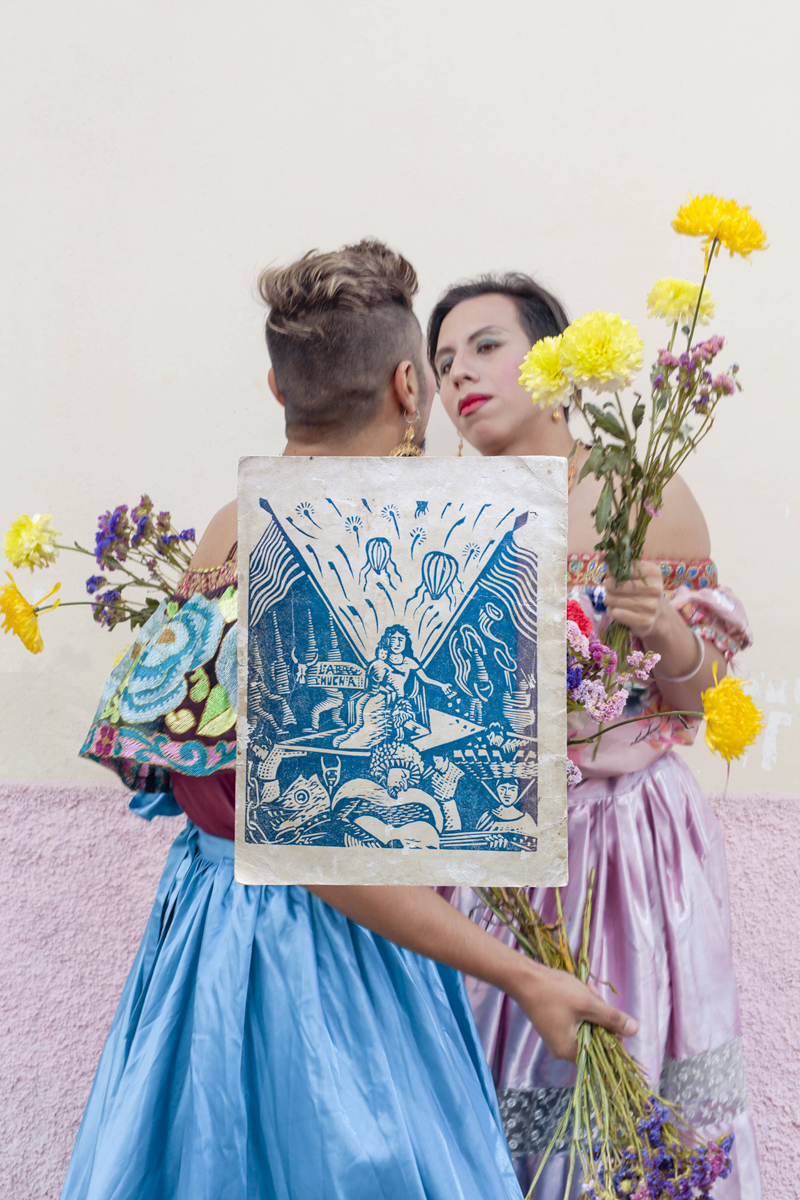
You work a lot with the Chuntás, could you tell us more?
Transito is a moment of transition towards the social space, which takes a different approach on the roles of family and community life. In it I inquire into the Fiesta Grande, an annual festival in the city of Chiapas de Corzo in southern Mexico, about 20 minutes from Tuxtla Gutiérrez, the place where I live. There men dress as women to dance, becoming in ‘Chuntá’.
It is an exploration of that universe of LGBTI+ people in Chiapas, in the place where the Fiesta Grande takes place, as this festive complex and ritual of January is called. There emerges the figure of Chuntá in this project, which had always existed since a very traditional and masculine point of view, although dressing as a woman but not considering transvestites.
Until a few years ago, a gang from Chuntá, as these dance groups are known, became increasingly visible, giving the opportunity for homosexuals, transsexuals, transvestites, and in general the entire LGBT community to participate in an inclusive way, the gang of Doña Esther Noriega Molina – known as Aunt They -, who was formed from the beginning (nineties) by discrimination and attack on a homosexual individual, Roberto Falconi, who dresses in Chuntá to be part of the celebration. Before this event, the character of Chuntá tended to mock women and not try to assume a full exercise of homosexuality. The Chuntá of Aunt They do not represent a particular or fixed orientation, and people are free to unite regardless of their sexual identity.
What has changed is the visibility, because this population of assumed sexual dissidents was rejected; it could not be admitted by the rest of the dance groups. So this discourse tends to open up, but what dressing implies in this context remains unchanged; it is a celebration of life and a celebration with less and less divisions among those who should be part of the tradition. The character of Chuntá thus can be seen from many points of view, but especially from the way in which those in a traditionally masculine community empower their feminine side, transgressing the notion of gender.
La Chuntá is associated with this local celebration as part of the cultural fabric and social fabric of the community, as a symbolic character. While the other, the homosexual individual like trans people, move in the sphere of their daily life, but come together at this moment, as part of a group of greater number of people each year in this great celebration of Chiapa de Corzo, where San Sebastián is honored as the spiritual epicenter of the festival, and the syncretism it represents, which fuses both the ancient Chiapanecan fertility ritual practices of pre-Hispanic origins, in which a young man was offered, together with the Christianity imposed during the colony since the 17th century, whose broken and broken body of the saint, is a significant allegory of the community, in addition to the religious forms that occur in the festive complex. And this is fascinating in a still conservative community, in which a change is felt, revealing a turning point. Although it is also true that there continues to be that rejection that we have to rethink, just also within these systematic crises that are now being rethought at the global level, and that will gradually tend to weaken like the structure of patriarchy, in a radical transformation of the system and values. with whom we related.
For eight years, when I joined the celebrations since the loss of my father, the absence of him made me think and reevaluate my own sexuality. Getting involved personally, by dressing as a woman, changed things. So the more I got involved, the more aware I was of my decision to embrace my feminine side, feeling close to important feminine presences in my life, like my grandmother and my mother, whose inner presence in my life was constantly being diluted by the strong temperament of my father; to subvert it in this exercise.
In short, in Tránsito I draw a connection between the absence of my father and my transformation in Chuntá, from a search for self-reconciliation and the construction of the patterns of acquired machismo. This experience led me to reflect on how, by adopting alternative identities, the figure of authority traditionally imposed by the patriarchal culture to which I belong can be destabilized. The transformation has allowed me to observe the patterns of the dominant masculinity that I grew up with, while becoming a Chuntá gives me the pattern to overcome them.
